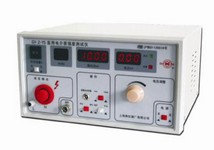Surface resistivity
Laboratory > Electricals
| What is Surface Resistivity ASTM D257, IEC 60093 | |
The resistivity (reciprocal of the specific conductivity), due to the low conductivity polymeric materials are used as insulators in the electrical and electronic industry. The specific surface resistance or surface resistivity is defined as the resistance between two electrodes located on the surface of a material with an area of 1 cm2 between them, its usual values are 10E10-10E14 ohm, unlike the resistivity in volume depends more on extrinsic conditions (environmental humidity, surface polish, surface contaminants ...) than the nature of the material itself. The resistivity of the surface is the resistance to the leakage current along the surface of an insulating material. Two parallel electrodes at a distance from each other equal to their contact length contact the surface of the material to measure the resistivity of the surface. Therefore, the quotient of the potential gradient (V / m) and the current per unit length of the electrode (A / m) represent the resistivity. In other words, this is the DC voltage ratio between the length and width of an object's surface. The resistivity of the surface is one of the characteristics of a given material that can be studied and evaluated to determine the overall value of the material, which can also be compared and contrasted with the resistivity of other materials. In general, the testing process helps in the selection of materials. The lengths in the resistivity of the surface and the cancellation of the ratio are usually measured in ohms because the four ends of the electrodes form a square. However, some test results use ohms per square due to their more descriptive nature. | |
| Test procedure | |
A sample of standard size is placed between two electrodes. For sixty seconds, a voltage is applied and the resistance is measured. The resistivity of the surface or the volume is calculated and an apparent value is provided (electrification time of 60 seconds). Sample size A 4-inch disc is preferable, or a 4-inch square. The minimum size is a 3.5-inch disk. |  |
Note | |
If a given application of voltage is maintained at a constant level, the electric circuit in a direct current will generally be in inverse proportion to the resistance. However, in a case of double resistivity, the current will only be half. On the other hand, if there is only half the resistivity, there will be twice the current. This applies to the vast majority of AC systems that run at low frequencies, such as circuits found in homes. In contrast, high frequency AC circuits often include parts that are capable of maintaining, emitting and converting energy. The absorption of water by polar groups as occurs in polyamides significantly influences the conductivity. Polyethylene and polyvinyl chloride are the most widely used insulating materials in cable insulation, the reason is in their high resistivity and good resistance to aging and water. |  |
